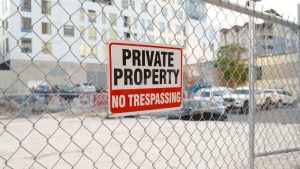Clear and undisputed title is the cornerstone of real estate ownership and transactions in New York. It represents the legal right to possess, use, control, and dispose of property. Yet, beneath the surface of deeds and records, disputes over rightful ownership and property interests frequently arise, leading to complex and often contentious litigation. Particularly in New York City, with its aged building stock, intricate property histories, and high property values, title challenges are a significant concern. Figeroux & Associates, located at 26 Court Street, Suite 701, Brooklyn, NY 11242, provides crucial legal expertise in resolving these fundamental property disputes. For assistance, contact the firm at 855-768-8845 or visit www.askthelawyer.us. This analysis explores common title and ownership disputes governed by New York State (NYS) and New York City (NYC) law.
Understanding Title and Its Challenges
Title signifies legal ownership. Evidence of title is typically found in deeds, public records maintained by county clerks, and title insurance policies which aim to protect owners and lenders against certain hidden defects. However, title can become “clouded” or disputed due to various issues, including errors in public records, breaks in the chain of ownership, unresolved liens, fraudulent activities, or competing claims arising from inheritance or prior transactions.
Quiet Title Actions: Seeking Clarity (RPAPL Article 15)
When competing claims cloud ownership, a “quiet title” action, governed by Article 15 of the NY Real Property Actions and Proceedings Law (RPAPL), is the primary legal remedy. This lawsuit aims to establish a party’s title definitively against adverse claims, effectively “quieting” the challenges.
- Purpose: To obtain a court judgment declaring the plaintiff’s rightful ownership and invalidating or barring claims made by others. Clear title is essential for selling, mortgaging, or developing property.
- Triggers: Quiet title actions are often necessary due to:
- Breaks in the Chain of Title: Missing deeds, improperly executed documents, or ambiguity regarding inheritance.
- Errors in Public Records: Mistakes in property descriptions, names, or indexing.
- Competing Claims: Claims from potential heirs, prior owners, holders of old mortgages or easements, or neighbors claiming ownership via adverse possession.
- Tax Sale Issues: Challenges related to the validity of tax lien sales and subsequent deeds.
- Procedure: The plaintiff files a lawsuit naming all potential claimants and must prove their superior right to title by a preponderance of the evidence. The lawsuit seeks a judgment confirming the plaintiff’s title and extinguishing the defendants’ claims. A lis pendens (notice of pendency) is typically filed to alert the public that the property’s title is subject to litigation.
- NYC Context: The age of many NYC buildings means historical records can be incomplete or contain errors, making quiet title actions particularly relevant for resolving long-dormant potential claims.
Lien Validity and Priority: Determining Who Gets Paid
Liens are legal claims against property securing payment of a debt. Mortgages, judgment liens (from court awards), mechanic’s liens (for construction work), and tax liens are common examples. Disputes frequently arise over:
- Validity: Was the lien legally created and recorded? For instance, a mechanic’s lien might be invalid if filed after statutory deadlines or without proper notice. A mortgage might be challenged if improperly executed.
- Priority: When multiple liens exist, their priority determines the order of payment upon foreclosure or sale. The general rule in New York is “first in time, first in right,” meaning liens recorded earlier generally have priority over later ones. However, significant exceptions exist:
- Real property tax liens typically hold super-priority over almost all other liens.
- Condominium liens for unpaid common charges have priority over subsequently recorded liens, except for taxes and first mortgages of record (RPL § 339-z).
- Cooperative corporation liens (UCC security interests) for unpaid maintenance often have priority over lender liens after notice. Resolving priority disputes is crucial for lienholders seeking to recover their debts and for owners understanding the encumbrances on their property.
Fraudulent Conveyances: Shielding Assets from Creditors (NY Debtor and Creditor Law Art. 10)
A fraudulent conveyance (or voidable transaction under the newer statute) involves transferring property to frustrate the rights of creditors. New York’s Debtor and Creditor Law Article 10 allows creditors to challenge such transfers. Two main types exist:
- Actual Fraud: Transferring property with the actual intent to hinder, delay, or defraud present or future creditors (DCL § 276 / UVTA § 273(a)(1)). Intent can be inferred from “badges of fraud” (e.g., transfer to an insider, lack of fair consideration, secrecy, transfer after being sued).
- Constructive Fraud: Transferring property without receiving “fair consideration” (or “reasonably equivalent value” under UVTA) if the transferor is insolvent at the time or is made insolvent by the transfer (DCL § 273 / UVTA § 274). Intent is irrelevant here.
Creditors can sue to have the fraudulent transfer set aside, allowing the property to be recovered and used to satisfy the debt. It’s crucial to note that New York adopted the Uniform Voidable Transactions Act (UVTA), effective April 4, 2020. Transfers before this date are governed by the older Uniform Fraudulent Conveyance Act (UFCA), while transfers on or after this date fall under the UVTA. A key difference is the statute of limitations: generally six years under the UFCA (via CPLR), but reduced to four years under the UVTA (with limited discovery exceptions for actual fraud).
Partition Actions: Dividing Co-Owned Property (RPAPL Article 9)
When multiple people own property together as tenants-in-common or joint tenants and cannot agree on its management or sale, any co-owner can commence a partition action under RPAPL Article 9.
- Purpose: To compel the physical division or, more commonly, the sale of the property and the equitable distribution of proceeds among the co-owners.
- Common Scenarios: Often used by heirs who inherit property jointly, former spouses, or business partners who can no longer manage the property together.
- Procedure: The court determines each owner’s respective interest. If physical division (“partition in kind”) is impractical (as it usually is for buildings), the court orders a sale (“partition by sale”). A referee is typically appointed to oversee the sale and manage the proceeds, which are then distributed after accounting for expenses and contributions made by individual owners (e.g., mortgage payments, taxes, necessary repairs).
- NYC Context: Partition actions are a frequent mechanism for resolving inheritance disputes involving valuable NYC real estate, where physical division is impossible and co-owners often lack the means or desire to buy each other out. The Uniform Partition of Heirs Property Act (RPAPL § 993), enacted in 2019, provides specific procedures and protections in partition actions involving inherited property owned by relatives (“heirs property”).
Other Title Conflicts
Disputes can also involve boundary lines between adjacent properties, the existence or scope of easements (rights to use another’s land for a specific purpose), and claims of adverse possession (acquiring title through hostile, open, continuous use for 10 years under RPAPL Article 5).
The Importance of Legal Counsel and Due Diligence
Title disputes delve into complex property laws, historical records, and potentially intricate chains of ownership. Thorough due diligence, including professional title searches and surveys before purchasing property, is essential. Title insurance provides critical protection against many unforeseen title defects. When disputes arise, however, navigating the legal intricacies of quiet title actions, lien priority contests, fraudulent conveyance claims, or partition proceedings requires experienced legal counsel. Figeroux & Associates possesses the expertise to investigate title issues, interpret governing statutes and case law, and vigorously advocate for clients’ ownership rights in court.
Conclusion
Undisputed title is fundamental to real estate ownership and value in New York. Yet, various factors – from historical record-keeping and complex inheritances, particularly prevalent in NYC, to fraudulent actions and simple errors – can create clouds on title, leading to significant legal battles. Whether establishing clear ownership through a quiet title action, enforcing or defending against liens, unwinding fraudulent transfers, or resolving co-ownership deadlock via partition, these disputes demand sophisticated legal understanding. Figeroux & Associates (855-768-8845 | www.askthelawyer.us) provides the necessary guidance and representation to effectively resolve title and ownership disputes and protect clients’ valuable property interests.
Click Here to Schedule a Consultation with Figeroux & Associates Today!



